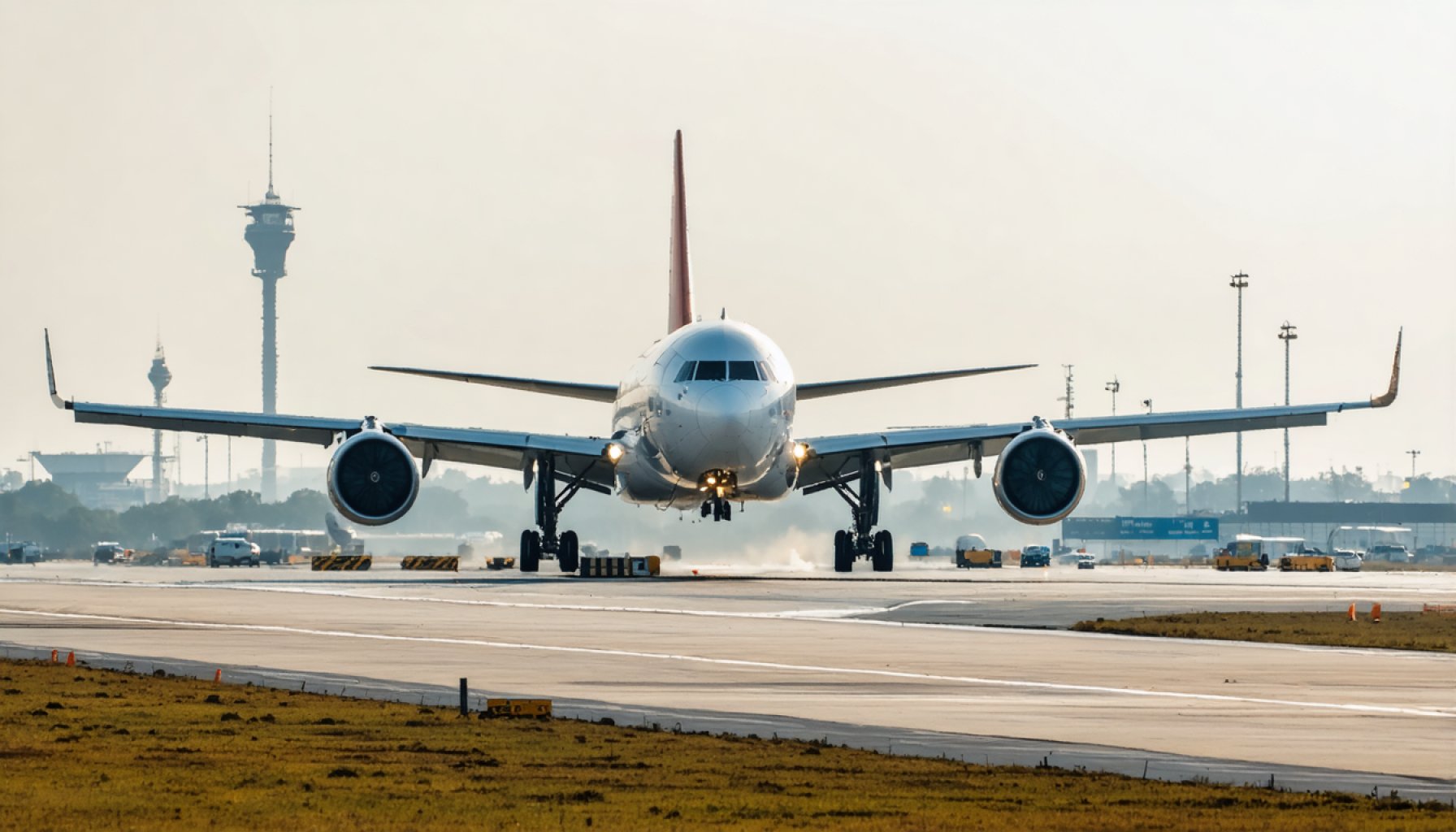- Delhi International Airport is on track to become a key global hub within two years, aiming for 24 million international travelers annually, nearing its target with 22 million.
- The airport’s international connecting traffic is reaching 30%, close to the ideal 33% benchmark for top global hubs.
- Delhi Airport facilitates flights to over 70 international destinations, including 9 cities in North America and 18 in Europe, with 280 weekly long-haul flights.
- Strategic alliances, like the MOU with Auckland Airport, aim to expand its reach into the Asia-Pacific region and beyond.
- An AI-based system enhances passenger experience, predicting and reducing wait times by nearly 20% for efficient traveler flow.
- Collaboration with airline partners and government agencies is crucial to maximizing this growth and enhancing travel experiences.
Under the vast Indian skies, Delhi International Airport stands as a bustling epicenter of global connectivity, bearing the promise of becoming a gateway that echoes across continents. The airport, steered by its dynamic CEO, Videh Kumar Jaipuriar, is closing in on a milestone that could catapult it to the league of elite global hubs within the next two years.
At the heart of this ambition lies a bold vision: drawing in 24 million international travelers annually. This goal, now tantalizingly close at 22 million, reflects the airport’s relentless push to expand its reach. A study by Arthur D’Little Consulting underpins this aspiration, setting benchmarks that DEL is steadily meeting. The numbers speak volumes—international connecting traffic is approaching 30 percent, just shy of the ideal 33 percent that marks a thriving global hub.
Today, Delhi Airport’s runways are pathways to over 70 international destinations. These include nine cities in North America and 18 across Europe. Every week, 280 flights soar toward long-haul destinations, an impressive figure that even surpasses major Southeast Asian hubs. With eyes set on the Asia-Pacific region, Delhi Airport is forging alliances, such as an MOU with Auckland Airport, poised to open new pathways across the southern hemisphere.
Geographically gifted, Delhi stands at an intersection favored by international airlines charting courses from Singapore to Paris, and Dubai to Hong Kong. The hub is not just a transit point but a launchpad, springboarding passengers to Europe from exotic locales like Phuket and Sri Lanka.
Beyond connections and destinations, the passenger experience remains paramount. An ingenious AI-based system orchestrates the flow of travelers, offering precise predictions to streamline operations and reduce wait times by nearly 20 percent. The airport’s forward-thinking approach ensures passengers glide through its gates with efficiency, catching flights that weave the global tapestry of connections.
As Delhi Airport steps confidently toward its goal, collaboration remains key. The airport’s strategy involves synchronizing efforts with airline partners and government agencies to refine flight schedules that enhance the travel experience.
The vision is clear, the momentum unstoppable. Delhi International Airport is not just a transit point but a vibrant hub poised to redefine global travel, one passenger at a time. As it nears the threshold of gateway status, the promise of a brighter future beckons, underpinned by innovation, strategic partnerships, and an unyielding drive to connect the world.
Delhi Airport: The Rising Star Among Global Aviation Hubs
The Rise of Delhi International Airport
Delhi International Airport, under the leadership of CEO Videh Kumar Jaipuriar, is at an exciting juncture, poised to become a preeminent global aviation hub. With an ambition to welcome 24 million international travelers annually, the airport is nearing this target with 22 million travelers already choosing Delhi as their gateway.
Key Facts and Features
1. Connectivity and Destinations:
– Delhi Airport offers flights to over 70 international destinations.
– There are 280 weekly long-haul flights, surpassing several major Southeast Asian airports.
– The airport caters to nine North American and 18 European cities.
2. Strategic Initiatives:
– An MoU with Auckland Airport will increase accessibility to the Asia-Pacific region.
– Delhi’s geographical position is advantageous for flights from Singapore to Paris and Dubai to Hong Kong.
3. Passenger Experience Enhancements:
– An AI-based system predicts traveler flow, enhancing operational efficiency and reducing wait times by 20%.
– Strategic collaborations with airlines and governmental bodies streamline flight schedules.
Industry Trends and Future Outlook
In the aviation industry, the trend is shifting towards creating seamless passenger experiences with the integration of technology. Airports worldwide are focusing on enhancing security and sustainability while also expanding their passenger and cargo handling capacities. Delhi Airport’s initiatives mirror this global trend by leveraging AI technology for a smooth passenger journey and forming partnerships for regional growth.
Security and Sustainability Efforts
Security and sustainability are crucial focus areas for Delhi Airport:
– Security Enhancements: State-of-the-art surveillance systems and AI-driven monitoring enhance safety measures, ensuring passenger security.
– Sustainable Practices: The airport is implementing eco-friendly developments, such as energy-efficient terminal designs and waste reduction programs.
Pressing Questions and Their Answers
1. How does Delhi Airport plan to accommodate rising passenger numbers?
– By expanding terminal capacity and integrating advanced AI technology for better crowd management.
2. What strategic partnerships are in place to boost Delhi Airport’s connectivity?
– Collaborations with Auckland Airport and other international airlines are set to extend its global reach.
3. How does Delhi Airport compare with other global hubs?
– It competes by surpassing many Southeast Asian hubs in weekly long-haul flights and offers extensive North American and European connections.
Actionable Recommendations
– Travelers: Leverage Delhi Airport’s extensive connectivity for seamless international travel.
– Airlines: Consider partnering with Delhi Airport to tap into its strategic regional growth initiatives.
– Investors: Monitor Delhi Airport’s growth as a potential investment in global aviation infrastructure.
Conclusion
Delhi International Airport stands on the brink of transforming into a global aviation powerhouse. By embracing innovation, enhancing passenger experiences, and forming strategic alliances, it is setting new benchmarks in the industry. For more insights about Delhi Airport and its journey as a global hub, visit the Delhi International Airport’s official site.



